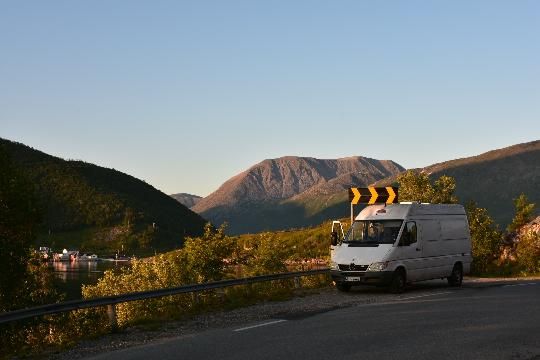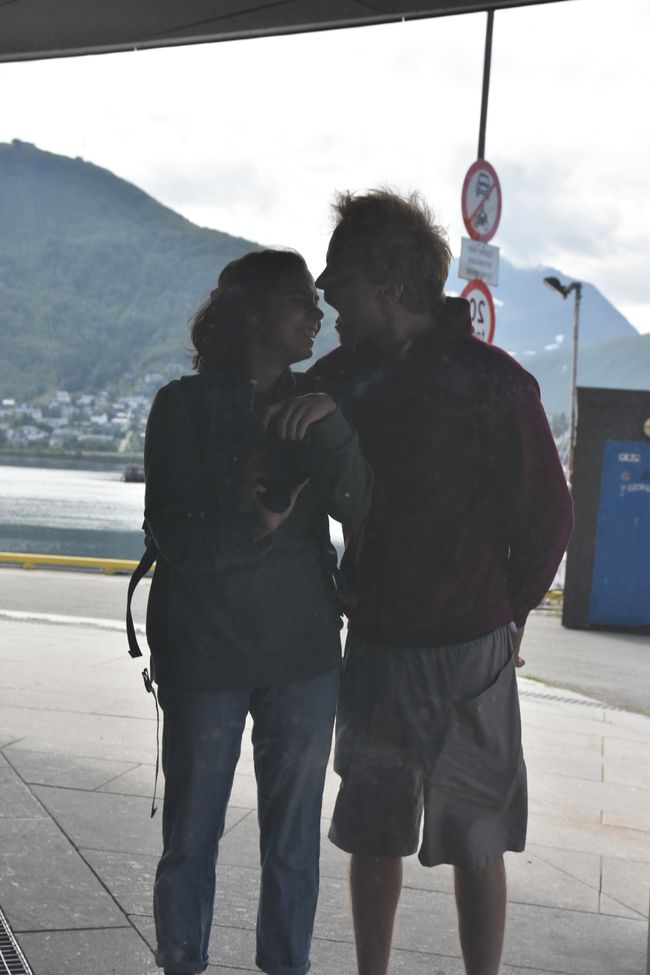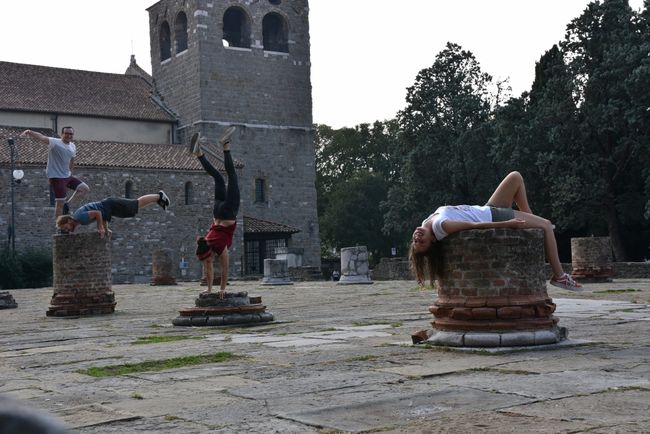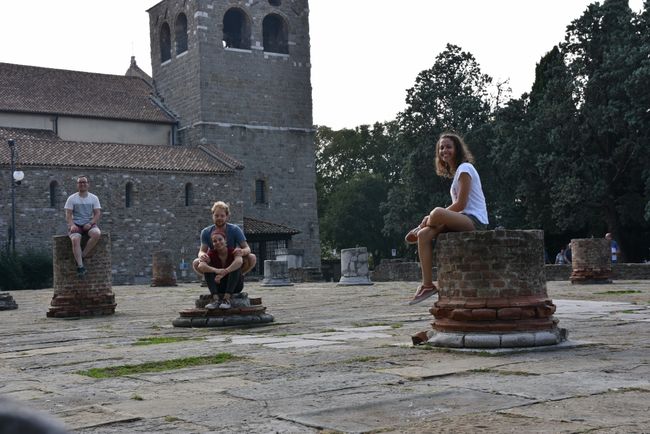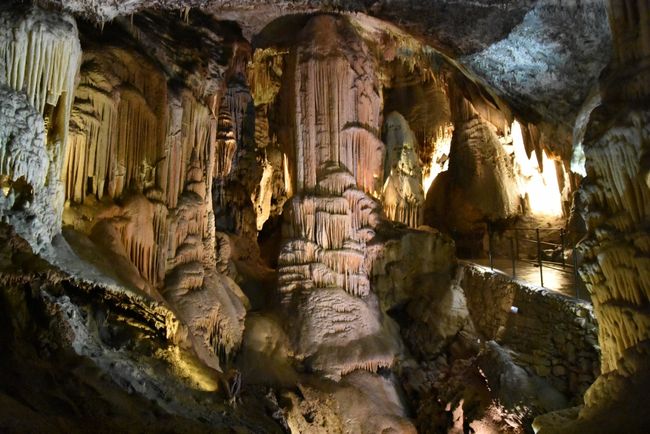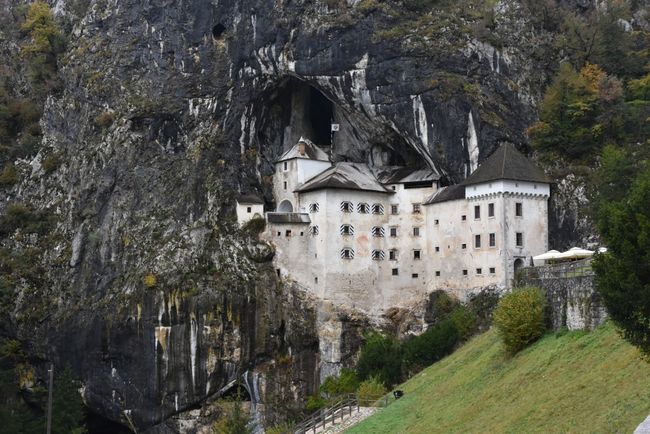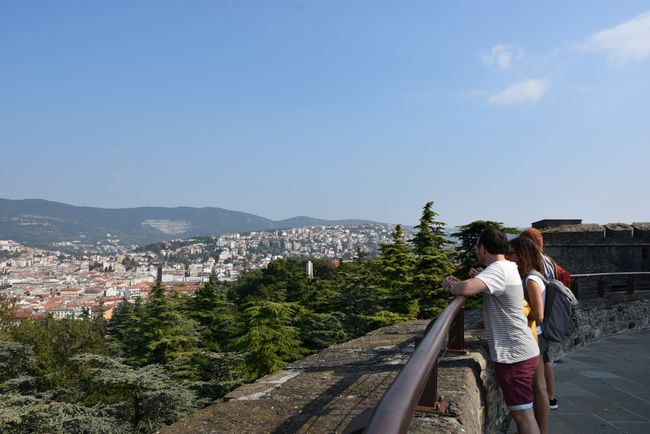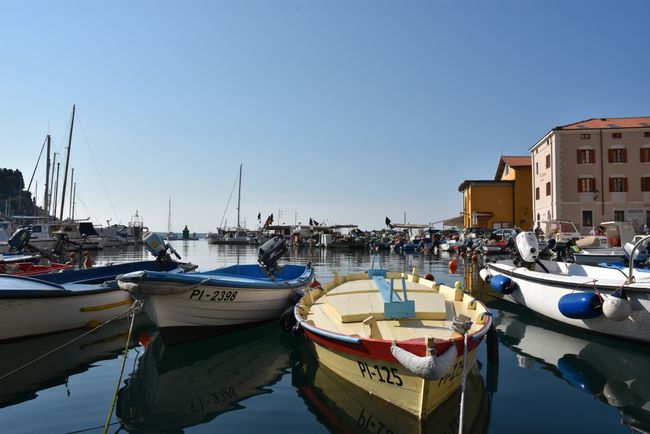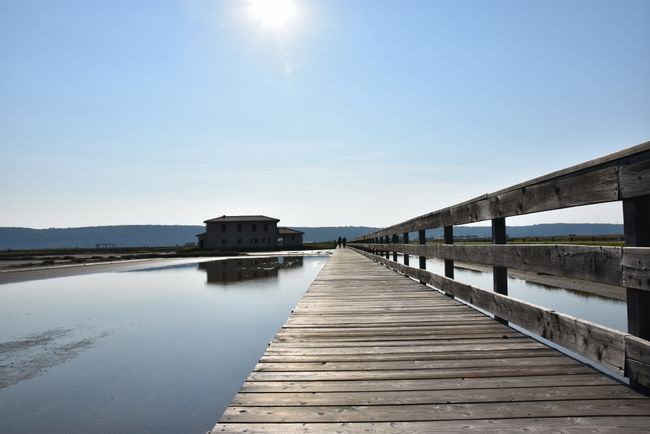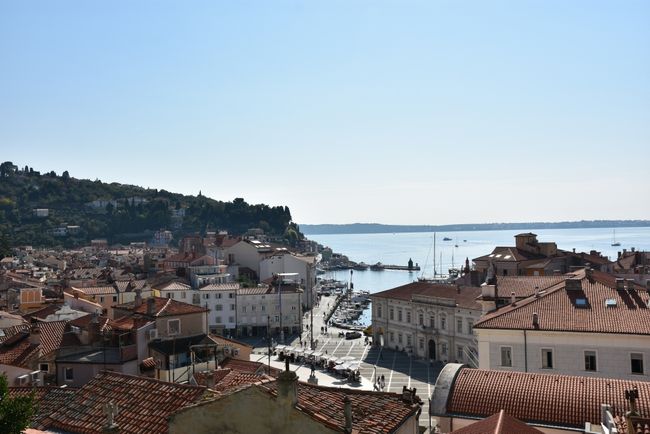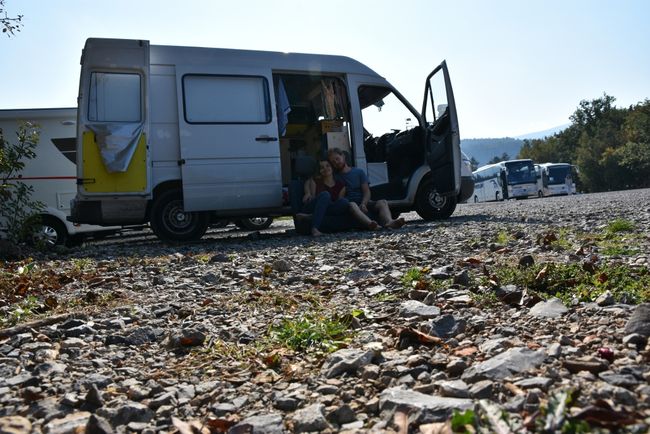Day 25-29 - Leave when it's the most beautiful
प्रकाशित: 12.10.2018
बातमीपत्राचे सदस्य व्हा
After the bad weather ruined our climbing plans, we decided to leave the mountains and explore the caves. Even though it's always cold and damp in a cave, at least we were protected from the rain.
The Postojna Cave was one of the things we really wanted to see in Slovenia. The term "cave" doesn't do justice to this natural wonder. The cave system is 2 million years old, 115 meters deep, and a whopping 24 kilometers long. The river has carved itself deep into the earth in three levels, and where there is no water flowing anymore, you can admire huge corridors and halls filled with stalactites. And tourists have been visiting for at least 200 years! However, in the first year, only 104 people visited the cave, which is fewer than the number of people attending one of the hourly tours today.
In addition to scientists, cave explorers, and locals, celebrities have also visited the cave, such as the Emperor and Empress Franz Josef and Elisabeth. To save them (and the less agile tourists) from walking too far, tracks were already installed early on. Back then, Sisi and Franz were pushed by workers, but today there's a proper little railway that goes right through the stalactite cave. It's currently the only subway in Slovenia. The cave has been electrically lit since 1884, making it three years ahead of the city of London.
In the largest hall, the Concert Hall, cultural events actually take place, including an annual nativity play and real concerts with a full symphony orchestra.
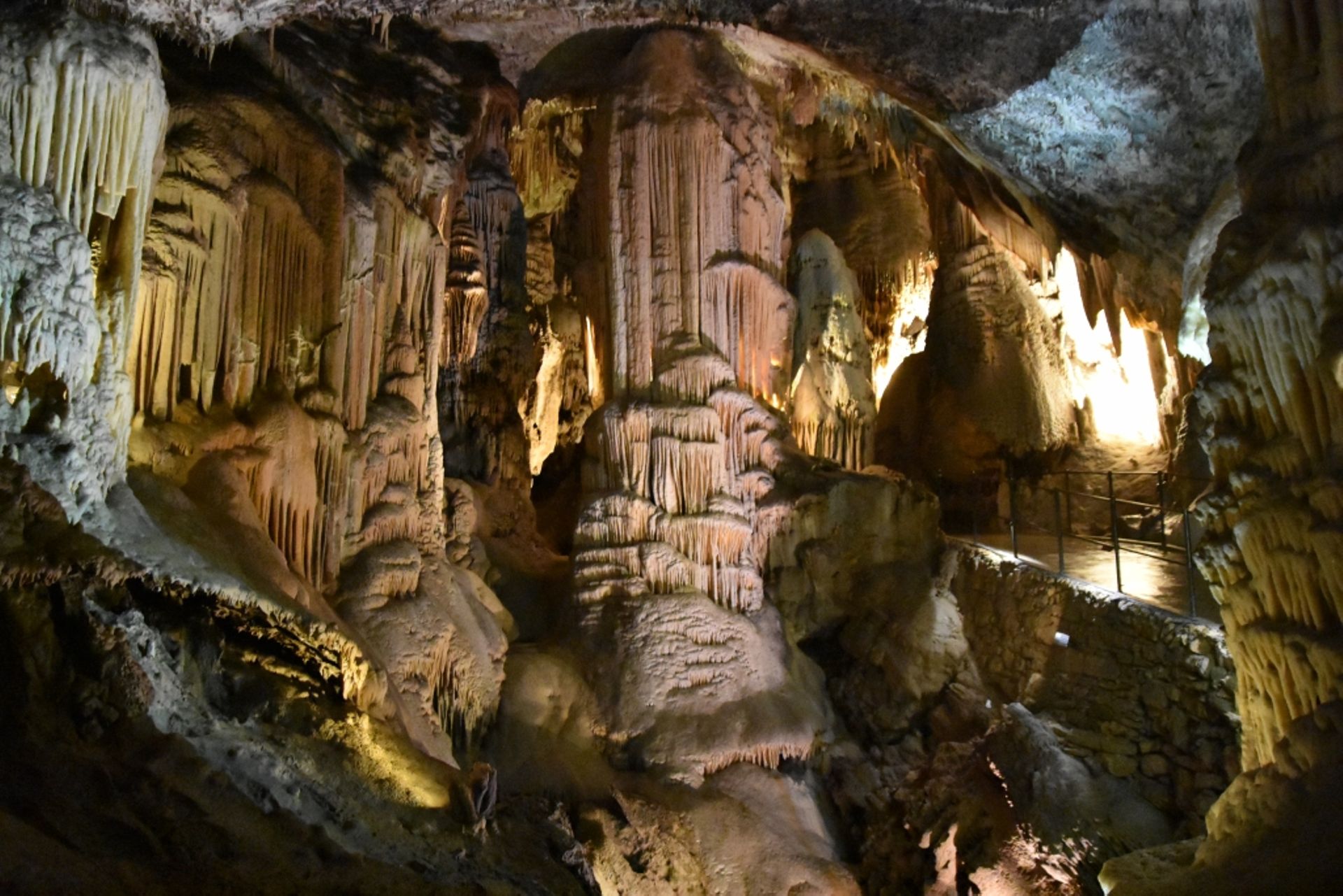
This and the rest of the area open to tourists are the only disruptions in this extraordinary ecosystem. Time seems to stand still here, or at least pass more slowly. Everything is incredibly old. The stalactites grow about one millimeter every 10 years - and the tallest one is 17 meters high!
The cave's living beings have adapted to the harsh conditions, including the all-encompassing darkness and the constant temperature of a damp and chilly 10 degrees Celsius. Their life cycle is also slower than that of their counterparts in the light. The cave is home to 115 animal species, mainly fish, amphibians, and insects. The most fascinating creature is the Olm (MDTFC, please take note), the largest cave-dwelling animal in Europe and can grow up to 35cm long. The Slovenians call it the "human fish" in loose translation. Its light pink color actually looks like human skin, and the Olm can live for over 100 years, only becoming sexually mature at the age of 14. However, its atrophied eyes and the fact that it can survive for up to 10 years without food make it less human-like. By the way, in the past, the locals mistook individual specimens found outside of the cave for the offspring of the dragon they believed to be living in the cave. Compared to that, the scientific explanation is almost boring.
But it's not just the animals that have made use of the cave. The Predjama Castle was built in the middle of a 127-meter-high cliff, with the cave system located behind, above, and below it. The cave mainly provided protection against attacks, as well as drinking water and a natural secret exit. Inside the cave, water from the stalactites was collected and channeled into the lower chambers through stone channels. This was another advantage during sieges, as the water was available even in times of drought and couldn't be poisoned like river water.
Knight Erasmus, a kind of Slovenian Robin Hood, withstood a siege thanks to the secret passage for over a year. In the end, he met an ignominious end on the most vulnerable place in the fortress, the toilet on the castle wall, hit by a cannonball. Shit happens.
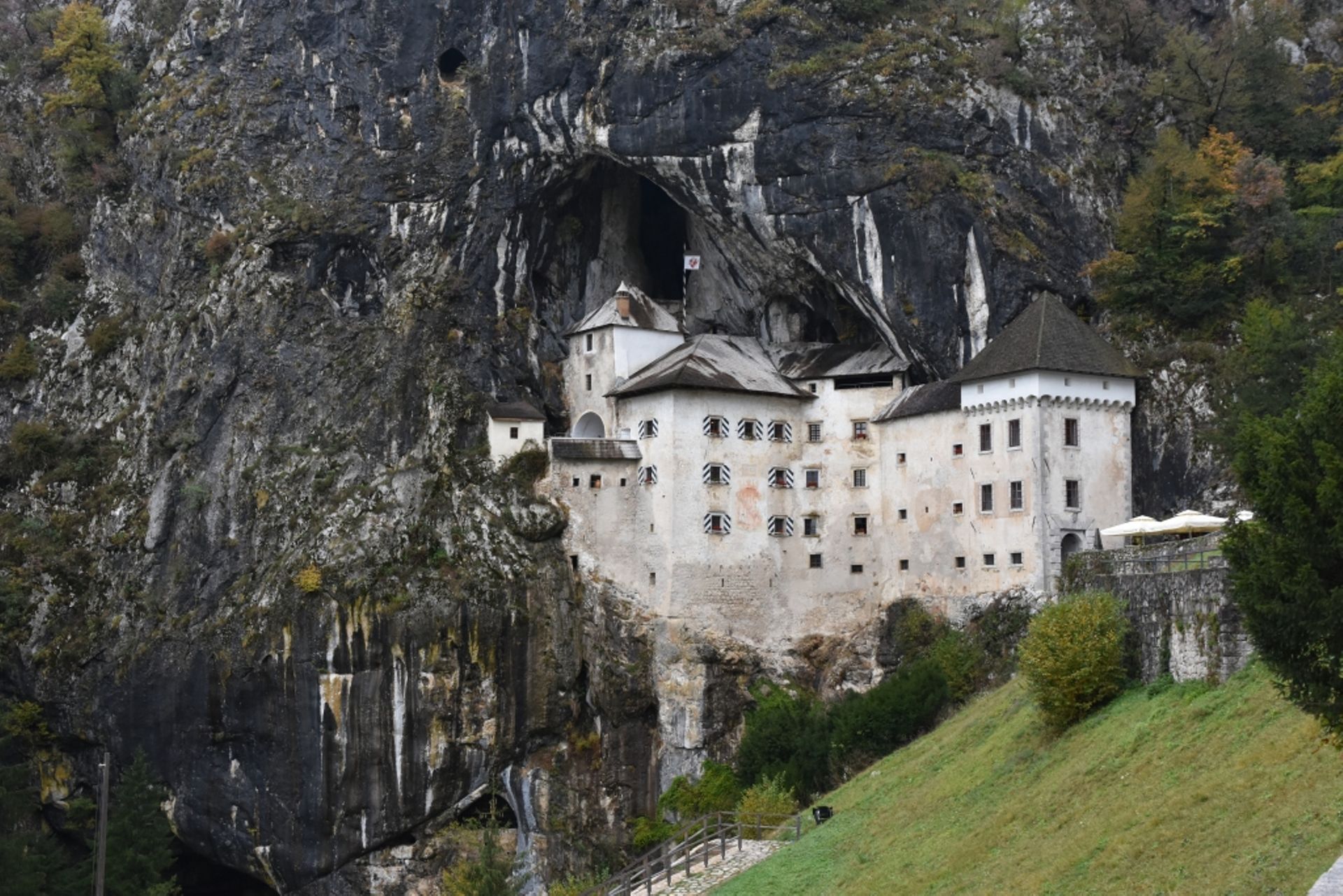
By the way, the castle hardly offered any comfort, and the only heated room was reserved for the lords of the castle. To ensure they didn't have to leave the warm stove even for church service, there was a special bench in the room and a window facing the adjacent chapel. Luckily, we live comfortably and warmly in Gretchen!

And since Gretchen is so flexible, we spontaneously met up with Philip and Pia just after crossing the Italian border in Trieste. The city shone with lots of sunshine and an old town with a castle, cathedral, and harbor. We have to admit that what really delighted us were the ice cream, pizza, and OUR NEW CHARGING BOOSTER, which we finally received here.

Before we visited the Škocjan Cave the next day, we took the opportunity to install the bench and the charging booster on the parking lot in the morning. And so far, it's working. We really hope it stays that way..
What sets the Škocjan Cave apart from the one in Postojna is the gigantic underground canyon along with its wide river. The narrow path at half height gave us a "Lord of the Rings" feeling that matched the second cave visit and its UNESCO World Heritage title. The River Rika, which means "river" - the Slovenians can do many things, but they're not very creative when it comes to naming things! - carries varying amounts of water, and the cave was partially flooded up to 150 meters high. It's hard to believe the power of water and what lies behind the spot where the river disappears into the mountain. No wonder people used to think that the cave was the entrance to Hades' underworld.

After parting ways with Philip and Pia, we spent a day in Piran, our actually final stop in Slovenia. The coastal town with its Italian flair gets its name from the old lighthouse, whose fire (Greek "pyr") used to guide sailors. We were somewhat shocked to realize that for the first time since we came to Slovenia, we didn't have a view of the mountains!
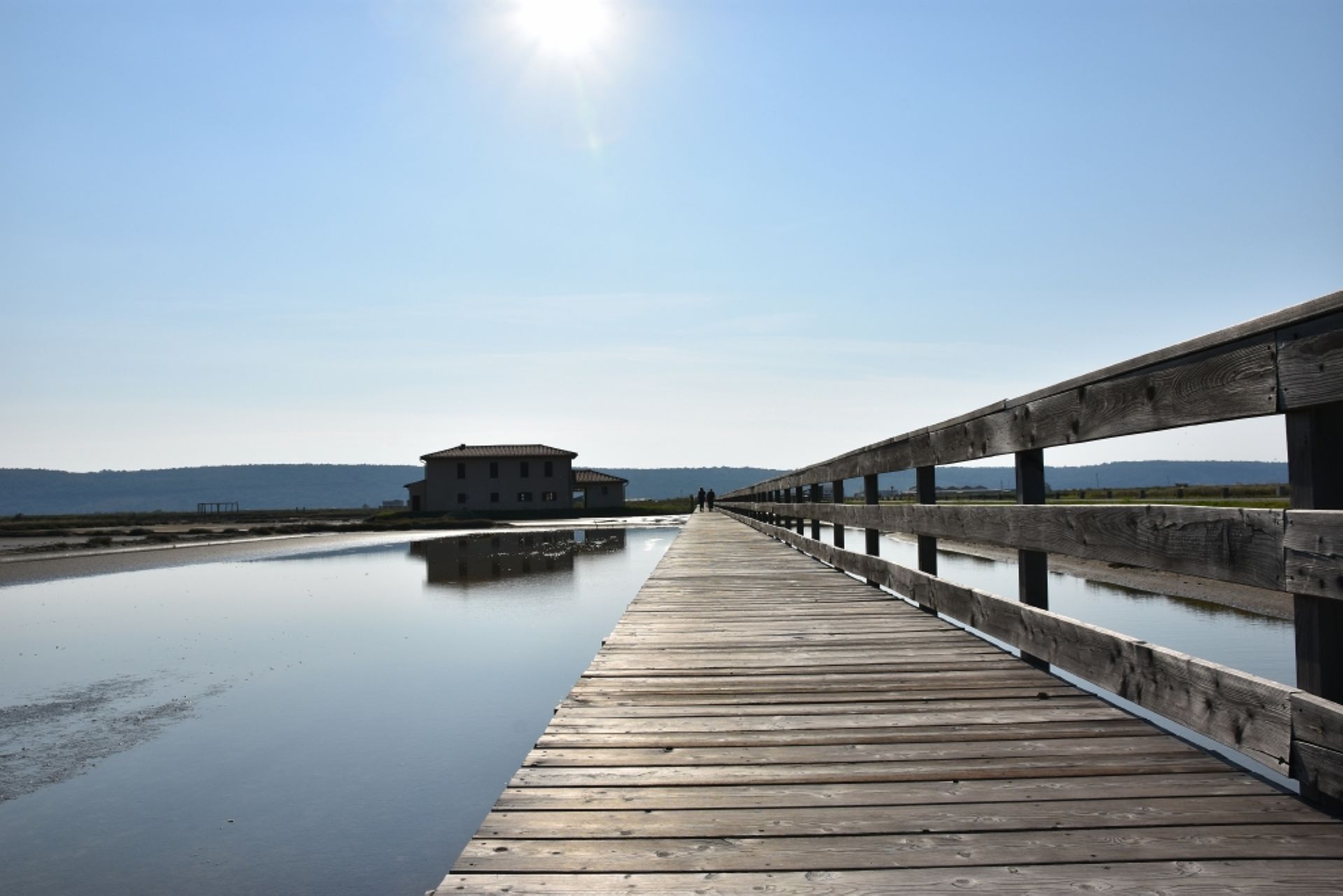
However, the nearby salt gardens compensated us for the usual view. Salt is still produced in the traditional way by evaporating water in basins and canals along the coast.
Inspired by the warm days in Trieste and Piran, we leave Slovenia behind and follow the sun to Croatia. Well, maybe the many recommendations for climbing areas in Istria and tips for sights to see in Croatia might have had something to do with it too.
Although our first leg of the trip comes to an end with Slovenia and we look back somewhat nostalgically, we are very excited to see what awaits us in Croatia. In any case, we'll make the most of the good weather and enjoy some climbing. A more detailed review of our journey through Slovenia and our first month on the road in Gretchen will follow soon.
Until then, sLOVEnia on!
बातमीपत्राचे सदस्य व्हा
उत्तर द्या (1)
Jürgen
Eure Berichte sind ja sehr interessant und ausführlich - da könnten wir uns eine Scheibe davon abschneiden!
